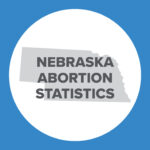Rewire’s Reckless Push for Mail-Order Mifeprex
This is Issue 20 of the On Point Series.
In pursuit of the possibility that abortion drugs could be distributed via pharmacies or mail order shipment for at-home use, researchers from a group called Gynuity Health Projects sought RU-486 online from 20 websites and had them tested for their potency – that is, whether they contained enough of the drugs in the two-step regimen to effectuate an abortion.[1] As interesting as the results were, it is equally of interest what the researchers, and a reporter for Rewire – which describes itself as committed to “evidence-based news, analysis, commentary, and investigative reporting on reproductive and sexual health, rights, and justice”[2] – considered unremarkable or an indication of safety. The results of the Gynuity purchase were first reported in the journal Contraception and recapped at the Rewire site[3] the same day (October 10, 2017).
First, as the Contraception article makes clear, none of the sites delivering RU-486 required a prescription to place the order. Essentially, this is home delivery of potent medication without medical confirmation of need (in this instance, pregnancy, much less confirmation of an intra-uterine pregnancy or identification of gestational age, a crucial factor in all safety assessments). Next, the researchers used what can only be described as very flexible means to determine whether the ordered drugs represented the FDA[4]– or World Health Organization (WHO)-approved doses of mifepristone and misoprostol for the purpose of inducing abortion.
Relying on assays conducted at what the researchers termed “a lab in good standing with the FDA,” the study confirmed that all the samples of the first pill (mifepristone) used during the medication abortion were within eight percent of the advertised WHO-approved effective amount (the WHO believes that the RU-486 regimen can be administered safely after 12 weeks,[5] two weeks beyond the expanded limit approved by the FDA on undetailed evidence in March 2016). The researchers seemed relatively unfazed by the samples they analyzed of the second pill (misoprostol), which causes contractions to expel the developing child. These samples “varied more considerably,” an understatement given that the assays for the pills labeled 200 mcg of misoprostol showed the actual misoprostol content ranging between 34.1 mcg and 201.4 mcg per pill. The researchers suggested that the wide variation in dose did not “necessarily render a product ineffective for terminating a pregnancy,” a wan conclusion that Rewire rephrased as signifying that the misoprostol doses “would still be effective in causing an abortion.” Moreover, the presumption in this review of mail-order Mifeprex is that the woman or girl taking the pills is not under a doctor’s care nor will she know the accurate dosage of the medicine she took.
Major safety issues for women continue to swirl around the issue of dosage size for misoprostol. Using the drug to induce abortion remains an off-label use in the United States. The FDA- and the WHO-recommended doses for inducing abortion are 800 mcg administered buccally, vaginally or sublingually up to nine weeks’ gestation when used with mifepristone, with a repeat dose of 400 mcg of misoprostol after nine weeks. Misoprostol of 800 mcg administered up to three times is recommended when the drug is used alone to induce an abortion. But The Lancet reports France will pull Cytotec (the brand of misoprostol currently sold in France) from the market in March 2018 because of concerns about the health harms seen at such dose levels and the difficulty under current practice of accurately breaking up 200 mcg pills into the 25 mcg quantity recommended for early induction of labor.[6]
From there the scientific standards used in this dramatically headlined “safety” report only go further downhill. Other major weaknesses of the study include:
- The study sampled only a small portion of the burgeoning online sites that sell chemical (medical termination of pregnancy, or MTP) abortion kits. While the numbers in the report are somewhat confusing on this point, it appears that 16 sites responded to the order placed. A Charlotte Lozier Institute review of online sites offering MTP kits in the summer of 2017 identified at least 85 unique sites offering MTP kits. The Contraception study looked at fewer than 20 percent of these sites, and secured drugs from only four different manufacturers.
- In terms of sample size, the quantity of pills obtained from these sites was almost uniformly minuscule. For the mifepristone tablets, only one pill was ordered from each site. For the misoprostol tablets, most sites provided a blister pack of four tablets and a couple of sites provided 20 and 12 tablets, respectively. Two sites accepted payments that were among the most expensive, used Western Union for transmittal, shipped the drugs, but delivery could not be completed.
- No examination of what else – possible contaminants or fillers – was in the pills was conducted to determine overall hazards of the medications.
- None of the mailed packages, as the study dutifully admits, contained any patient information or insert on how or when to take each pill in the regimen, contraindications, or what to expect after administration of the pills.[7]
- Nine of the shipped drug packages – or 45 percent – were damaged in shipment, including eight that had pinprick holes in the foil on the blister pack and one that had “extensive damage.” Combined with the two orders for which delivery was not completed, this means that 11 of the 22 original orders resulted in a damaged and compromised product or no product received at all.
- Compounding uncertainties, the assay performed on each of the sites’ product was limited to testing a single pill from the mifepristone portion of the order and a single pill from the misoprostol portion. In addition, it appears from the study report that even this single pill was assayed using a single run through a liquid chromatograph so that the reported figure is a one-test result from a package ranging in size from four to 20 pills. The N value is essentially one assay out of a sample of one pill from a sample of one to 20 pills from an unknown population. The statistical representativeness of this process and the accuracy of the chemical content analysis of the pills overall are virtually nil.
- The dosage range for the 20 misoprostol pills tested (only 18.5 percent of pills overall) ranged from only 17 percent of the labeled content to a little over 100 percent, with five of the 20 pills (25 percent) containing under half of the recommended dose.
- The study makes no reference to lot number or other coding information that would indicate precisely when and where the pills were manufactured. The study notes that after the orders were placed some of the websites selling the drugs disappeared from the web. All the products were manufactured in India but 15 of the 20 were mailed in the United States. Only two of the 20 came in a box that would potentially protect the products from damage. The study notes that “very few” of the products matched the image shown on the website advertising them and the brands on the products occasionally differed from the advertising as well. In the event of injury, the woman consuming the pills would have little information or conflicting information on which to pursue a complaint or redress.
- Finally, the online ordering process, especially the lack of required information about the patient and that person’s medical history in all but two cases, does not inhibit sale and shipment of these potent drugs to a third-party, including a disgruntled boyfriend,[8] abuser, or sex trafficker[9] intent on inducing an abortion with or without the woman’s knowledge or cooperation. The availability of bulk orders of misoprostol only reinforces these potential uses of the drug to commit or to conceal crimes.
In view of the foregoing and other irregularities related in the text of the study, including delayed arrival of many of the pills received (up to three weeks after placing the order and sending payment), any assertions about the efficacy and safety of these chemicals as abortifacients in women up to and beyond 12 weeks of pregnancy is wholly unsupported. From one perspective, it is astonishing that a paper based on such limited information, sampling, and testing was published at all, much less in the flagship journal of the Planned Parenthood Federation of America and allies in the reproductive health movement. The danger of doing so is amply illustrated by the Rewire report, which concluded from such limited and flawed data that abortion pills ordered online are “safe.” All that remains to point out is that, thankfully, these pills were straw purchases and no one actually consumed any of them. There is no safety data at all in this study. Any conclusion to the contrary is unfounded and uncommonly reckless.
Charles A. Donovan is the president of the Charlotte Lozier Institute; Donna Harrison, M.D. is the executive director of the American Association of Pro-Life Obstetricians and Gynecologists.
[1] Murtagh, C., Wells, E., Raymond, E. et al., “Exploring the Feasibility of Obtaining Mifepristone and Misoprostol from the Internet,” Contraception (2017) at https://doi.org/10.1016/j.contraception.2017.09.016
[2] Jodi Jacobson, “Welcome to Rewire!,” Rewire.com, March 20, 2016, at https://rewire.news/article/2016/03/20/welcome-to-rewire/.
[3] Steph Herold, “Study: Abortion Pills Ordered Online Were Safe, But None Came With Instructions,” Rewire.com, Oct 10, 2017, at https://rewire.news/article/2017/10/10/study-abortion-pills-ordered-online-safe-not-everyone-knows-use/.
[4] MIFEPREX (Mifepristone) Tablets Label, U.S. Food and Drug Administration, March 2016, at https://www.accessdata.fda.gov/drugsatfda_docs/label/2016/020687s020lbl.pdf .
[5] “Safe Abortion: Technical and Policy Guidance for Health Systems. 2nd edition,” World Health Organization, 2012, at https://www.ncbi.nlm.nih.gov/books/NBK138196/.
[6] The Editors of the Lancet. “Retraction and republication—Misoprostol drug to be withdrawn from French market,” The Lancet, November 16, 2017, at http://www.thelancet.com/journals/lancet/article/PIIS0140-6736(17)32907-0/fulltext.
[7] Mifeprex label, op. cit.
[8] “Man, 30, charged with murder ‘after lacing his pregnant girlfriend’s pancakes with abortion-inducing drug,” DailyMail.com, February 27, 2014, at http://www.dailymail.co.uk/news/article-2569555/Man-30-charged-murder-lacing-pregnant-girlfriends-pancakes-abortion-inducing-drug.html.
[9]Lederer, L.J., Wetzel, C.A., “The Health Consequences of Sex Trafficking and Their Implications for Identifying Victims in Healthcare Facilities,” Annals of Health Law 23 (2014):61-91, at http://www.globalcenturion.org/wp-content/uploads/2014/08/The-Health-Consequences-of-Sex-Trafficking.pdf





























